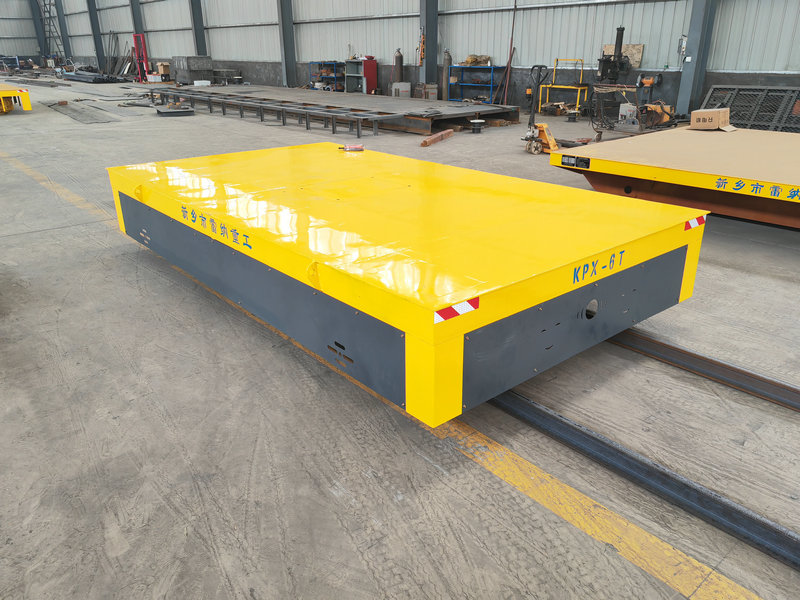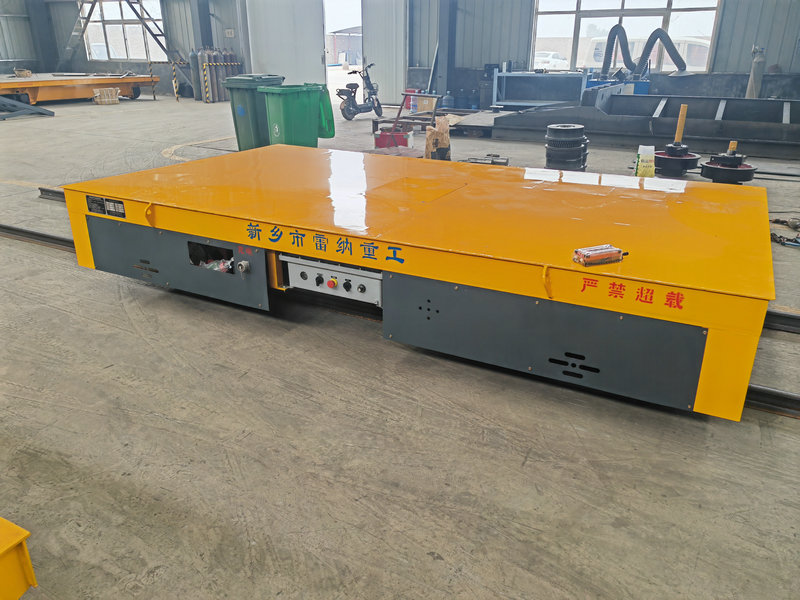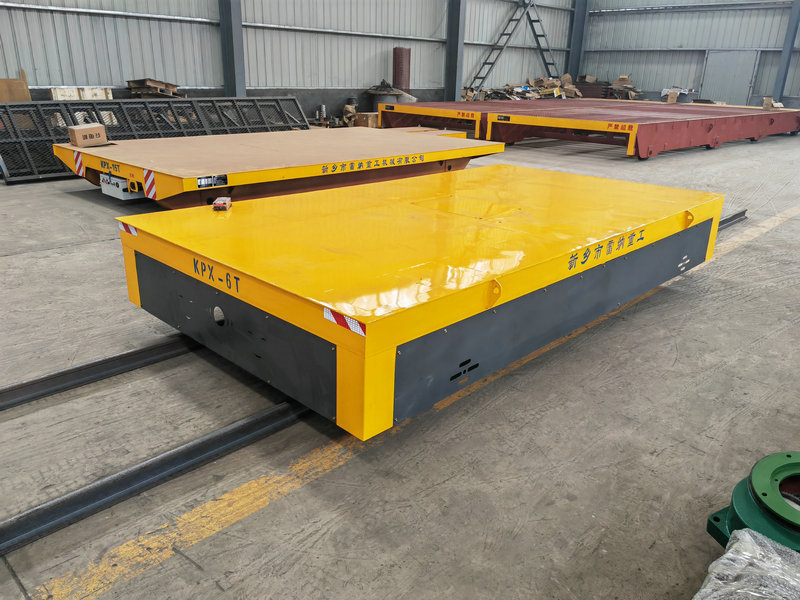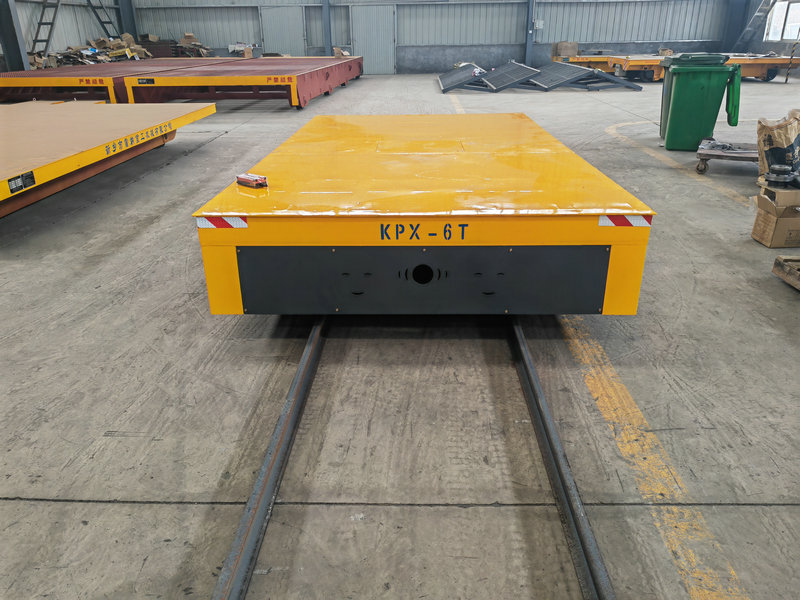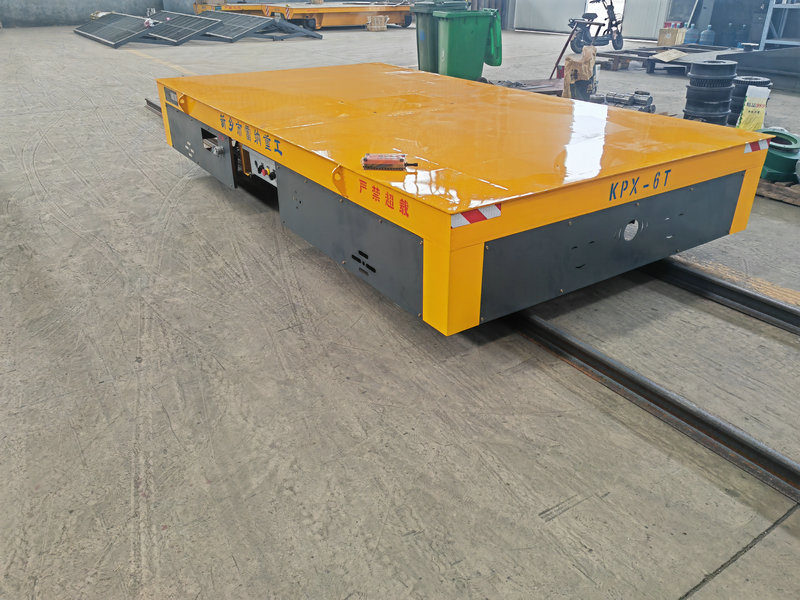




The battery-powered rail transfer vehicle is a new type of material transport equipment within factories. Powered by rechargeable batteries, it operates on factory-preset tracks, enabling efficient and safe transportation of various materials, tooling, finished products, and semi-finished products between different workstations and areas within the workshop.
Compared to traditional cable-towed rail transfer vehicles, battery-powered rail transfer vehicles are free from the constraints of cables, eliminating the risk of cable entanglement or wear, making them more flexible and safer to operate. Furthermore, they offer zero exhaust emissions and low noise during operation, meeting the requirements of modern green and environmentally friendly factory construction.
This equipment is widely used in industries such as metallurgy, machinery manufacturing, automotive assembly, mold processing, warehousing and logistics, electronics manufacturing, and the chemical industry. It is particularly suitable for short- to medium-distance, multi-station, and frequent transport operations.
Typical load capacity ranges from 1 to 300 tons, with 2-, 5-, 10-, and 20-ton models being the most common.


Core Advantages
1️⃣ Battery-Powered, Green and Environmentally Friendly
Powered by high-performance rechargeable batteries, it eliminates the constraints of cable traction.
Zero tailpipe emissions throughout the entire process, meeting the requirements of green manufacturing and environmentally friendly workshops.
Supports both lead-acid and lithium battery configurations to meet different workload and endurance requirements.
Can be equipped with a quick-change or online charging system for continuous operation.
2️⃣ Cable-Free, Flexible Layout
No towing cables are required, allowing the vehicle to move freely along the track, enhancing workshop layout flexibility.
The track can be designed in straight, curved, circular, intersecting, or diverging configurations based on production processes.
The equipment can be used in production scenarios with limited space or complex routes, with a compact footprint and strong adaptability.
3️⃣ Stable Operation, Strong Load Capacity
Rated load capacities range from 1 ton to 300 tons, meeting transport needs from light parts to heavy equipment.
The vehicle structure is welded from high-strength steel, ensuring stable load bearing and long service life.
Smooth start and cushioned braking ensure safe and smooth transport.
4️⃣ Comprehensive Safety Features
Equipped with an audible and visual alarm system for real-time operating status notification;
Emergency stop switches and limit switches prevent equipment from overshooting or accidents;
Optional infrared sensor collision avoidance or laser scanning protection reduce the risk of injury to personnel and equipment;
Supports zone speed limits, allowing for different speeds in different zones.
5️⃣ Convenient Operation and Supports Automation Expansion
Dual control modes: joystick control and wireless remote control for flexible operation;
Stepless speed adjustment for flexible settings based on working conditions;
Expandable automatic navigation and intelligent dispatching systems for unmanned operation;
Supports integration with intelligent logistics systems such as MES, WMS, and AGV.


Technical Parameters
The rated load capacity of battery-powered rail transfer vehicles typically ranges from 1 to 300 tons and is customized to meet factory transportation needs. Common sizes include 2, 5, 10, 20, and 50 tons.
The battery system is available in 24V, 36V, 48V, 72V, or higher voltages. Depending on the load and operating distance, the battery life is typically 6-8 hours, with a charging time of approximately 4-6 hours. A fast charging or battery replacement system is also available.
The operating speed is adjustable from 0-20 m/min to accommodate varying production cycles.
Common track types include P24, P38, P43, P50, or P60. The appropriate specification should be selected based on the equipment's tonnage.
The equipment comes standard with audible and visual alarms, limit switches, an emergency stop button, and collision avoidance. Laser scanning or infrared sensing safety modules can be optionally upgraded for even higher levels of protection.


Typical Application Scenarios
1. Raw Material Transportation
Transporting raw materials such as steel, coils, castings, and plates from storage to the production line reduces manual handling and forklift usage.
2. Workshop Process Integration
Connecting different process stations enables efficient material flow between production lines, reducing waiting time.
3. Mold and Tooling Handling
Transporting heavy objects such as large molds, fixtures, and other tools reduces operational risks and improves handling safety.
4. Hazardous Workplace Operations
Suitable for high-temperature, toxic, or flammable workshops, combined with remote control to ensure personnel safety.
5. Finished Product Offline and Shipment
Transporting finished products directly from the production line to the packaging area or warehouse improves overall logistics efficiency.


Customized Services
We provide one-stop customized services to ensure our equipment meets our customers' factory layout and production requirements:
Track design and construction: Supports complex route planning, including straight lines, curves, branches, and intersections.
Customized vehicle structure: Flatbed, guardrail, roller conveyor, and lift platform.
Flexible battery configuration: Lead-acid or lithium batteries, with quick replacement and online charging options.
Automation upgrades: Can be integrated with AGV, WMS, and MES systems for unmanned management.
Upgraded safety features: Laser scanning, infrared sensing, remote monitoring, and zone speed limits.


Product Advantages
The battery-powered rail transfer vehicle utilizes battery-powered technology, track guidance, and intelligent control to meet the high-standard internal logistics and transportation requirements of modern factories, making it an ideal alternative to traditional manual transport and forklift handling.
Higher Efficiency: Reduces manual labor and shortens transportation time.
Lower Cost: Reduces labor and maintenance costs.
More Environmentally Friendly: Zero emissions and low noise levels, meeting Green Factory standards.
Safer: Multi-layered safety measures reduce accident rates.
Smarter: Supports automated control, facilitating factory digital upgrades.




